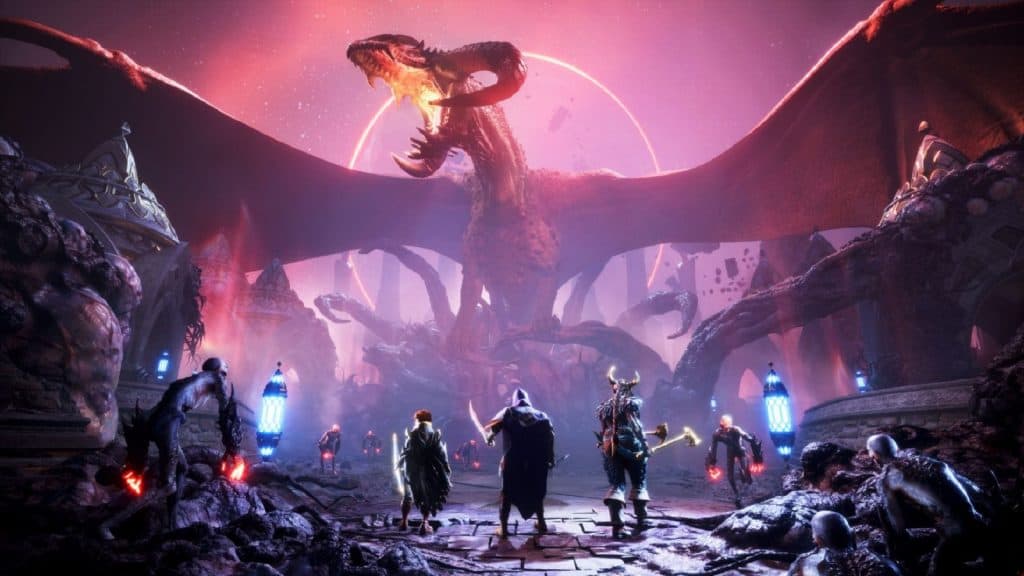Dragon Age: The Veilguard is the latest entry in BioWare’s long-running RPG series, which began in 2009 with Dragon Age: Origins. Known for its deep narratives, rich character interactions, and a blend of tactical and action combat, the franchise has been a hallmark of Western RPGs. The Veilguard marks a significant shift, introducing a more action-oriented combat system while retaining the series’ focus on party dynamics and storytelling. For a newcomer to the series like me, it’s an interesting introduction, though I’ve read that long-time fans might view it differently.
Set in the high-fantasy world of Thedas, The Veilguard follows the story of Rook, a leader tasked with assembling a diverse group of companions to stop ancient Elven gods from unleashing destruction. The game is an action-RPG with a focus on party management, decision-making, and narrative exploration. Players journey across various locales, from dense forests to sprawling cities, solving puzzles, fighting enemies, and uncovering the history and secrets of Thedas. The overarching goal is to save the world, of course, but the journey focuses just as much on the relationships and conflicts between Rook and their companions.

The story in The Veilguard is engaging but feels overly safe compared to other RPGs I’ve played. The plot: preventing two ancient gods from bringing chaos serves as a solid foundation, but it doesn’t explore many new or challenging ideas. While I appreciated the lighter tone, I missed the morally complex and weighty storytelling that other RPGs, like The Witcher 3 or Baldur’s Gate 3, are known for. The dialogue often strayed into cringe-worthy territory, with some exchanges feeling overly forced or juvenile. At times, it felt like the game was trying too hard to inject humor or drama, and the lack of subtlety in character interactions became distracting.
Companions bring charm and personality to the story, but their conflicts and arcs often feel shallow. There’s a lack of genuine tension or difficult choices, which makes the narrative less impactful. Solas, an antagonist referenced heavily in the marketing, plays a surprisingly small role, leaving the spotlight on villains who lack depth. That said, the companion banter and interactions, while occasionally awkward, added warmth and humor that kept me somewhat invested.

The gameplay in The Veilguard strikes a balance between accessibility and strategy. The combat system is action-oriented, with a focus on combining abilities between Rook and companions. The primer and detonator mechanics encourage experimentation, but the limited enemy variety and overly spongy health bars make combat feel repetitive after a while. By the mid-game, I found myself lowering the difficulty simply to get through battles faster. Compared to other RPGs, the lack of tactical depth was noticeable, but the fast-paced action still kept me engaged for the most part.
The game’s structure could use improvement. Companion quests, while enjoyable in isolation, feel disconnected from the main plot. The pacing suffers because these missions often interrupt the central narrative for long stretches. Additionally, side activities and puzzles are too simplistic to feel meaningful, often feeling like filler rather than enriching experiences. While these elements weren’t outright bad, they often felt like missed opportunities to add depth.
Visually, The Veilguard is stunning. The environments are beautifully crafted, with each area, whether it’s a dense forest or a crumbling fortress, feeling distinct and atmospheric. The art direction elevates the world of Thedas, making it a joy to explore despite the linear-level design.
The music, while not particularly groundbreaking, complements the game’s tone well. It captures the sense of adventure and drama without ever feeling intrusive. However, the voice acting stood out more for me, with performances that added personality and humor to the characters. That said, the uneven writing sometimes undercut the actors’ efforts, leaving certain scenes feeling unpolished or out of sync with the intended tone.

One of the standout features of The Veilguard is its effort to embrace diversity, equality, and inclusion. The game includes a wide range of characters from different backgrounds, ethnicities, and orientations, and it treats these representations with respect. While some dialogue may feel a bit forced in trying to highlight these aspects, I found the inclusion overall refreshing and appreciated the effort to create a world that feels inclusive. That said, I’d encourage future iterations to integrate these themes more seamlessly into the narrative and world-building, so they feel less like checkboxes and more like natural parts of the story.
I played The Veilguard on PC, and the performance was excellent. I’m running on a 12th Gen Intel Core i7, 32GB DDR4, and an Nvidia GeForce RTX 3080 Ti. Even with ray tracing enabled and settings on high, the game ran smoothly with no noticeable frame drops. It’s impressive that it’s Steam Deck verified and DRM-free, which makes it accessible to a wider audience. Bugs were minimal, and I didn’t encounter any game-breaking issues, which is always a relief in modern RPGs.
Dragon Age: The Veilguard may not reinvent the RPG wheel, but it’s a solid entry point for newcomers like me. Its stunning visuals, charming companions, and approachable gameplay make it an enjoyable experience, even if it falls short of delivering the depth and complexity seen in other modern RPGs. However, the overly simplistic puzzles, repetitive combat, and occasionally cringe-worthy writing prevent it from reaching its full potential.
While veteran fans may find the game’s mechanics and narrative a step back, I appreciated its accessibility and polish. Dragon Age: The Veilguard is a flawed but fun RPG that left me eager to see what BioWare will deliver next.
Dragon Age: The Veilguard
Dragon Age: The Veilguard delivers an approachable entry into the RPG genre with stunning visuals, charming companions, and action-focused combat. While its story and gameplay lack the depth of some modern RPGs, the world-building and character interactions shine.
The Good
- Stunning visuals
- Strong art direction
- Charming companions
- Approachable gameplay
- Solid performance
- Polished accessibility (DRM-free, Steam Deck verified)
- Fast-paced action
The Bad
- Shallow storytelling
- Repetitive combat
- Disconnected pacing
- Simplistic puzzles
- Cringe-worthy dialogue
- Underwhelming antagonists
- Occasionally forced DEI integration



